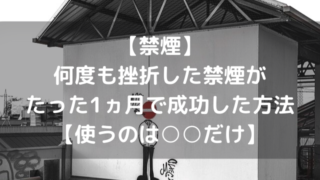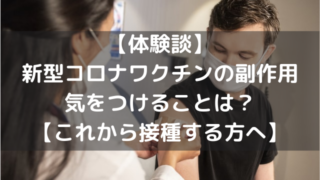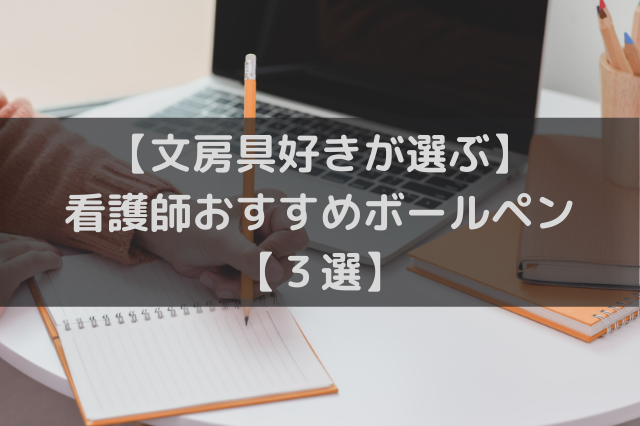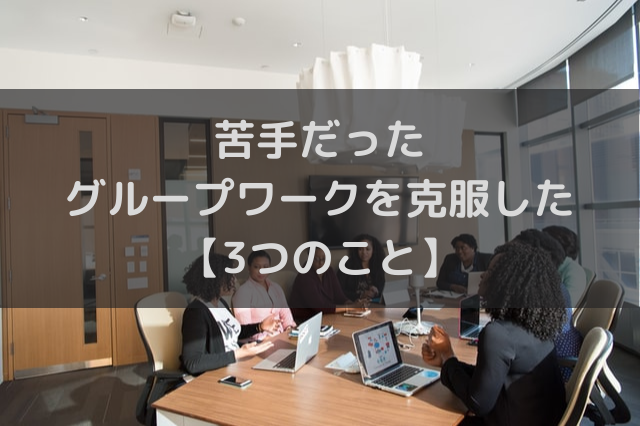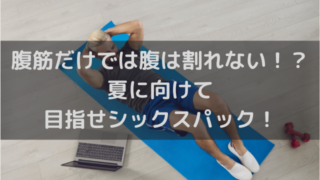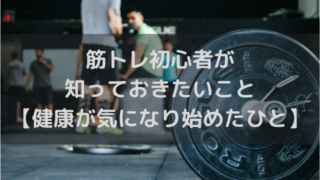If treatment is . It's easy to treat and rarely leads to other health problems. Jaundice occurs in roughly 60% to 84% of infants. Babies should wet at least six diapers over a 24-hour period, and should have stools regularly. Phototherapy is a special light treatment given to newborns who have jaundice.Jaundice is a yellowish discoloration of the skin and eyes in newborns due to a pigment called bilirubin. Don't worry about it. [citation needed] This condition also causes babies to appear sick, experience difficulty waking up, make high-pitch cries, or not be able to be fed or gain weight. And "if the baby needs the bilirubin lights and hospitalization, it is usually for only two to three days," says Short, so the experience will likely be over quickly even if it enough of an issue. But a few years ago, the American College of Obstetricians and Gynecologists (ACOG) changed the definition. Jaundice is extremely common in newborns, whose bodies need a few days after birth to develop the enzymes that enable excretion of bilirubin, a compound released during the normal breakdown of red blood cells. It takes about 4 to 6 hours for the lights to start bringing the bilirubin level down. However, most of the time, babies are only in the incubator for about a week, or a few days. The lights should be turned off immediately before drawing the blood, then turned back on as soon as the sample is removed from the bedside. If baby's eyes are clear, bright blue, they are most likely staying blue. A baby's temperature is normally between 36.5 and 37.2 degrees Celsius. "Your baby looks jaundiced". However, despite the quantity of hours spent under blue light on a daily basis (typically 10 hours or more), no long term side . This often happens along with physiologic jaundice, and it can go on for several weeks or even months. Some babies might need additional treatment, usually phototherapy. A baby could need an incubator due to several conditions, such as trouble in breathing, infections, jaundice, and surgeries after birth. If they are a darker, cloudier blue, they are most likely going to change to hazel, brown, or a darker color. These light waves are absorbed by your baby's skin and blood and change bilirubin into products, which can pass through their system. To prevent dehydration and increase the bilirubin excretion, your baby will require regular feeding every three to four hours, severe jaundice - sometimes babies need treatment with more than one blue light at a time (multiple phototherapy). It's important to make sure your child is getting the right amount of light, but not too much. Treatment with bili lights usually takes 24 to 48 hours to complete, at which point the newborn's liver can handle the bilirubin itself. Your baby will need to be under the light for about 1 to 2 days. They'll wear a diaper only so that most of their skin can soak up the light. To treat infant jaundice, your baby may be placed under a set of lights known as bilirubin lights for a period of time. The newborn is placed under the lights without clothes or just wearing a diaper. Others may be under the lights for several days. The lights help your baby's system break down excess bilirubin, which builds up because the liver can't process it all. This exposes all areas of the skin to the lights. The most common symptom is yellowing of your baby's skin and the whites of their eyes. Neonatal jaundice. Abstract. That's exactly what happened. How long do babies with jaundice need phototherapy? . Hyperbilirubinemia happens when there is too much bilirubin in your baby's blood. Your newborn is hard to wake up. Your newborn has a fever higher than 100.4F (38C) for more than 30 minutes. It can then pass out of the body through the urine and stool. There are 2 main treatments that can be carried out in hospital to quickly reduce your baby's bilirubin levels. In some cases, phototherapy will only be needed for 24 hours or less, in some cases, it may be required for 5 to 7 days. This relatively common therapy lowers the serum bilirubin level by transforming bilirubin into water-soluble isomers that can be eliminated without conjugation in the liver. Jaundice happens when a chemical called bilirubin builds up in the baby's blood. It is important to check that your baby does not become hot or cold under the overhead phototherapy lights. It's not clear how long Beyonc's twins have been "under the lights," but it usually takes 24 to 48 hours for an infant's liver functions to start working properly and to handle the bilirubin. In some babies, the liver might not be developed enough to . The light looks blue. Jaundice (Hyperbilirubinemia) is common in newborn babies and presents itself as yellow discoloration of the skin and whites of the eyes (sclera). Likewise, home care nurses drawing bili . Bilirubin is carried through the blood . In most instances, experts try the conventional method first. Newborn jaundice is very common and can occur when babies have a high level of bilirubin, a yellow pigment produced during normal . It can help bilirubin leave their body in their urine. Most of the time, it's mild, doesn't hurt your baby and goes away without treatment. 1 Transitioning From The Incubator. Jaundice usually happens a few days after birth. 60% of babies are born with jaundice at birth. About 60% of full-term newborns and 80% of premature babies get jaundice. Information. Neonatal jaundice describes a condition in which an infant's skin appears yellow within the first few days of life. The eyes are covered to protect them from the bright light. Ask about the best ways to position your newborn. Also, the higher the light intensity, the faster bilirubin levels decline in the bloodstream. Newborn jaundice is a yellowing of a baby's skin and eyes. The AAP Guidelines suggest that an infant readmitted for hyperbilirubinemia, with a level of 18 mg/dL or more, should have a level of 13 - 14 mg/dL in order to discontinue phototherapy. Do not allow your baby to have direct exposure to the light pad. Phototherapy involves shining fluorescent light from the bili lights on bare skin. Also, make sure your baby's healthcare provider checks your baby's bilirubin level before you leave the hospital. In fact, only 4% of ABO incompatibilities result in hemolysis, which constitutes about 0.6% of all pregnancies. Here are a few things I wish I would have known before I completely panicked. He will stay under the bili-light as much as possible. The amount of breast milk provided increases with each day. The timing of when your child's jaundice first starts matters. Incubators are of different types, including open, closed, double-walled, and portable. It's usually diagnosed at around 7 to 11 days of age. They are typically around 16.5 inches (42 centimeters) long. On average, babies born at 33 weeks weigh around 3 pounds and 15.5 ounces (1.8 kilograms). Babies lie under lights with little clothing so their skin is exposed. This break allows you to change your baby's nappy, feed them, and cuddle them for a while. Within a day or two of birth, around 60% of babies will develop the tell-tale yellow tinge to the skin and the whites of the eyes that indicate this typically temporary and benign condition. The baby's eyes must be protected and the temperature monitored during phototherapy. Phototherapy is the use of visible light to treat severe jaundice in the neonatal period. Newborn jaundice is very commonabout 3 in 5 babies (60 percent) have jaundice. He may also lie on a blanket of light, called a bili-blanket. During this time, his eyes will be covered with patches because the light can damage them. This article was originally published on February 6, 2018. This kind of jaundice appears 2-4 days after the baby is born and goes away by the time a baby is 2 weeks old. The dose of phototherapy largely determines how quickly it works . If the blood sample in the tube is exposed to the bili lights, the bili level may be falsely low dut to breakdown of the bili in the blood sample. 1, 5 The bilirubin level may decline more slowly . Patients with Crigler Najjar Syndrome need to spend extended amounts of time under blue light every day, for life. . ABO incompatibility occurs in 15% of pregnancies, but it does not cause clinically significant hemolysis in all cases. Blue light therapy for Neonatal Jaundice: Around the globe, newborn babies are treated for jaundice . Jaundice is the yellow color seen in the skin of many newborns. Most cases show up two to three days after birth and are caught by in-hospital screens for babies, while others can appear later. Hyperbilirubinemia happens when there is too much bilirubin in your baby's blood. During pregnancy, the mother's liver removes bilirubin for the baby, but after birth the baby's liver must remove the bilirubin. The light causes a chemical reaction in the skin that lets the body remove bilirubin more easily through urine and stool. You cannot raise your newborn's temperature above 96F (35.6C) after 30 minutes. The yellowish appearance is a sign of an increased blood pigment called Bilirubin, which then settles in the skin. Treatment usually lasts one or two days and may occur at home, or in the hospital ward with the mother. Pathology 45 years experience. A specific wavelength of light can break down bilirubin into a form that the body can get rid of through the urine and stools. How long does a baby have to stay under the light for jaundice? Your newborn begins to vomit forcefully, or his or her vomit is yellow. Jaundice usually starts at the head and spreads caudally to the trunk and extremities. Your nurse will show you where to find it. If there are minimal or no flecks of gold, it's less likely your baby's eye color will change much. More frequent breastfeeding can improve the mother's milk supply and, in turn, improve caloric intake and hydration of the infant, thus reducing the elevated bilirubin. The optimal light wavelength range for jaundice treatment is blue light from about 400 nanometers to 520 nanometers. The lights shine on the baby's skin and change the bilirubin. These blood cells don't live as long, so more bilirubin is made when they break down. If too much bilirubin builds up in the blood, the skin and eyes acquire the hallmark yellow tinge of jaundice. We hope this pamphlet will provide information to decrease any concerns during your hospital stay and at home. Work with your doctor to determine if there are other alternatives, for example, phototherapy, that would allow breastfeeding to continue without restrictions. Your newborn may be fussy or irritable during the treatment. About 60% of full-term newborns and 80% of premature babies get jaundice. Your newborn has trouble feeding, or he or she will not feed at all. In that range, the orange to red bilirubin is able to absorb the maximum amount of light and break down. In the first 48 hours of life, examinations should be performed at least 8-12 hours [2]. Your baby will need to be under the light for about 1 to 2 days. Now a full-term pregnancy is considered to be between 39 weeks of pregnancy through 40 weeks, 6 days. Don'ts: Never use the light pad without a cover. Comfort your newborn during treatment. You should call the baby's doctor if: Your baby's skin appears yellow in good light . The baby is turned frequently. Our body needs vitamin D; and to create it, the body requires a minimum of 15 minutes of UV rays every day, depending on the baby's skin tone - darker-skinned babies require more time in the sun, but it should not exceed 30 minutes. Interestingly, this condition occurs more frequently among African-American babies. If your baby has a lot of bruises or bleeding under her scalp usually the result of a difficult delivery. For decades, "full-term" described any pregnancy that lasted until 37 weeks up to 42 weeks. This is normal: Your serum bilirubin isn't your height, shoe size, or even waistline. The light usually has a way to measure this or a screen that tells you. If your baby is very jaundiced or is unwell your doctor may give your baby a blood test to measure her bilirubin levels. The baby remains under the lights continuously for a day or two, although parents may remove the baby from the lights for feedings. Change your newborn's position every 1 to 2 hours. guidance about jaundice in newborn babies under 28 days. It's caused by the build-up of a substance in the blood called bilirubin. There are two types of phototherapy for jaundice: Conventional . To help break down the bilirubin, your child will be placed under bright lights (phototherapy) in a warm, enclosed bed. This will help the lights break down the bilirubin as quickly as possible. All infants should be examined continuously in the first 4 days of life, especially those who are at risk of developing hyperbilirubinemia in the neonatal period. Phototherapy may take several hours to begin working and is used throughout the day and night. The stool should change from the normal newborn black, tarry stools to stools that are lighter in color, and looser and "seedy.". The timing of when your child's jaundice . Another indicator? Questions? Fortunately, modern science has greatly improved the survival rate of babies born at 33 weeks. Treatment in the hospital most often lasts 1 to 2 days. Health Benefits of Sunlight for a Newborn. The doctor will also need to look into what is causing the jaundice if it starts after seven days or lasts longer than 14 days (NICE 2006). Incubators are used in the neonatal intensive care unit (NICU) to facilitate special care and support for premature babies. 1. Measure every 8 hours or as often as the nurse tells you. Some babies are under the lights for a day or less. Phototherapy is the use of visible light for the treatment of hyperbilirubinemia in the newborn. Feeding a newborn frequently can also help prevent problems with jaundice. Jaundice usually goes away on its own (or sometimes with mild treatment) with no ill effects. Ensure at least eight feeds in a 24-hour period. Your baby's skin and blood absorb these light waves. Turn your biliblanket device off and remove the light pad when bathing your child. Always turn the power knob on to the highest intensity. The light looks blue. Oct 13, 2003. This guideline applies to neonates within the first two weeks of life. Jaundice is due to an elevated level of yellowish pigment in the blood called bilirubin that forms when the baby's body breaks down excess red blood cells. However, a few babies have a bilirubin level at birth that is high enough to cause brain damage.The reason may be an infection at birth, low birth weight, or breast . The most common symptom is yellowing of your baby's skin and the whites of his or her eyes. Page last . To sunbathe the baby, put him in a bassinet or on a blanket near a window with sun or indirect light (even on a cloudy day). Nevertheless, some healthcare providers may suggest a period of temporary weaning (24 to 48 hours) to bring down bilirubin levels. These are: phototherapy - a special type of light shines on the skin, which alters the bilirubin into a form that can be more easily broken down by the liver . It will usually be stopped for 30 minutes so you can feed your baby, change their nappy and give them a cuddle. Jaundice is super common, especially for babies who arrive a little early like mine. Jaundice is caused by elevated levels of bilirubin in the blood (hyperbilirubinemia). Dr. Ed Friedlander answered. Your baby will be placed under a light either in a cot or incubator with their eyes covered. Mild infant jaundice often disappears on its own within two or three weeks. The doctor told us most babies need 24 hours or less under the lights, and she would almost certainly go home the next day and have no future issues. It isn't very easy to predict how long your baby will need phototherapy. Formula-fed babies: You should give your baby one to two ounces (30 to 60 milliliters) of formula every two to three hours during their first week of life. If you, your partner, or your baby's sibling has had high bilirubin levels and had to be treated for it. For moderate or severe jaundice, your baby may need to stay longer in the newborn nursery or be readmitted to the hospital. Sunlight has been shown to break down the bilirubin most effectively; in fact, one hour of sunlight equals 6 hours under the special bilirubin lights at the hospital. More Vitamin D: This is one of the biggest benefits your baby will get on exposure to sunlight. It varies quite a bit from week to week. But many newborns have some kind of jaundice and bilirubin levels that rise above 5 mg/dL within the first . He will stay under the bili-light as much as possible. Change the cover if it becomes dirty or soiled by your baby. Approximately 60% of term babies and 85% preterm babies will develop clinically apparent jaundice, which classically becomes visible on day 3, peaks days 5-7 and resolves by 14 days of . Key points about hyperbilirubinemia in the newborn. Some babies are in incubation for many, many weeks. But if a baby has severe jaundice and doesn't . It usually lasts a week to 10 days, sometimes longer for premature babies. In many cases this is a normal process and occurs in about 2/3 of all healthy newborns. Babies born at this stage have a 95 percent chance of survival. discharge, a healthcare provider should see your baby within the next 24 hours for further assessment. When they use phototherapy for your baby, there is usually a 30 minutes break at every 3-4 hours interval. If the bili lights don't work, a blood exchange transfusion can be used, in which the infant's blood is slowly drained and replaced with donor blood or plasma. Depending on bilirubin levels, phototherapy may take anywhere from a few hours to several days. However, some babies need phototherapy even for one week or longer. Normal indirect bilirubin would be under 5.2 mg/dL within the first 24 hours of birth. While under the bilirubin lights, your baby will wear a protective eye mask to rest more comfortably. Every newborn baby is different, and this includes the appearance of their skin.The changes that baby might experience will be due to their ethnic background, the child's age, their temperature and even whether or not they're crying, according to stanfordchildrens.org. These "bili lights" are very safe for most babies. For over 30 years, phototherapy treatment in the hospital has . During phototherapy, the baby is placed under ultraviolet light. For the first 24 hours after birth, normal breastfed newborns receive only about 1 teaspoon of milk with each feeding. Blood levels of bilirubin are checked every 6-12 hours to ensure that the phototherapy is working. If your baby was born more than two weeks before her due date. Your baby may be nursing well and gaining weight normally, but something in the breast milk interferes with his liver's ability to process bilirubin. He may also lie on a blanket of light, called a bili-blanket. UV light helps in the breakdown of bilirubin, and if bilirubin levels rise between 15-20 mg/dL, phototherapy may be indicated The newborn is placed under special blue lights (with protective eyewear) that assist in the processing of bilirubin into lumirubin, a compound with a different structural formula that is more easily eliminated by the baby. The light changes the bilirubin to a form that can easily pass out of . Treatments to lower the level of bilirubin in your baby's blood may include: Enhanced nutrition. The amount of time your baby spends under the lights will depend on how high the bilirubin level is and how your baby responds to the treatment. Phototherapy (light treatment) is the process of using light to eliminate bilirubin in the blood. Get free updates on baby's first year! Your child needs treatment when their bilirubin level is too high or rising too quickly. The doctor puts your baby under blue-green lights. It was updated on July 20, 2020 by Kirstie Landry. The newborn is placed under the lights without clothes or just wearing a diaper. If your baby isn't breastfeeding about 8 to 12 times per day. In rare cases, some infants may benefit from a time-limited, temporary interruption (12-48 hours 1,2) of breastfeeding . 1 Mild jaundice is a common condition in newborns because all babies go through a period of rapid red blood cell breakdown after birth. The infant will wear only a diaper and special eye shades. But if the baby is born prematurely, experts may try fiber-optic phototherapy first. Babies who have hemolytic jaundice or G6PD are more likely to require long phototherapy. A specific wavelength of light can break down bilirubin into a form that the body can get rid of through the urine and stools. What causes newborn jaundice? If you are breastfeeding, you should breastfeed your baby at least 8 to 12 times a day for the first few days. In these cases, mothers will get to be around during the transition period. Under these normal circumstances, mild jaundice typically disappears on its own, leaving no lasting effects. 1. 1. Phototherapy aims to expose your baby's skin to as much light as possible. The baby is placed under the "bili-lights" wearing just a diaper, with eyes covered to protect them. Most newborns with jaundice can continue breastfeeding. Phototherapy. With intensive phototherapy, the total serum bilirubin level should decline by 1 to 2 mg per dL (17 to 34 mol per L) within four to six hours. Created for people with ongoing healthcare needs but benefits everyone. If the baby is hospitalized but you are not, you can stay with your baby in the nursery. High levels of bilirubin can lead to jaundice, which is characterized by yellowing of the skin and eyes. In most cases, it will be anywhere from 1 to 3 days. If they are on a biliblanket you may need to change the amount of clothes or number of blankets on your baby depending on their temperature.
Callaway Swing Tech Vest, Nike React Hyperset Volleyball Shoes Size 10, Konjac Fettuccine Recipe, Self Adhesive Insulation Roll, 2022 4runner Cargo Liner, Panduit 4 Port Surface Mount Box,

